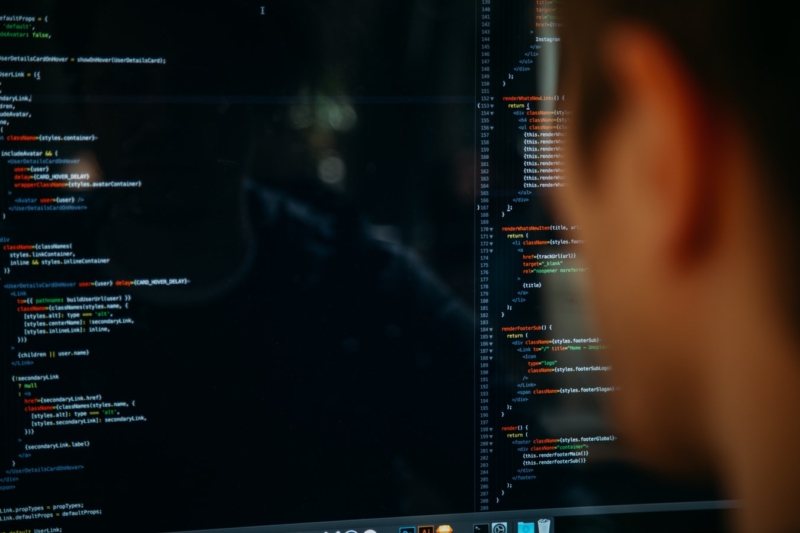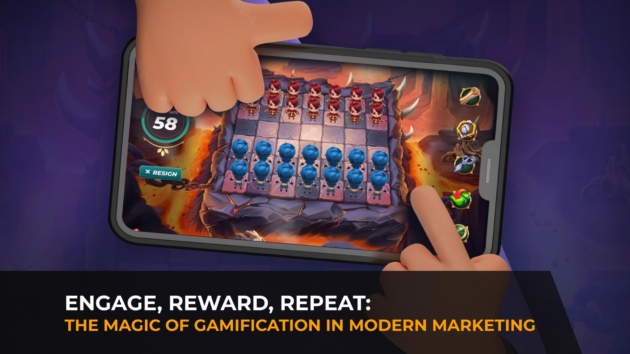As is the case with any software product, the custom game development process follows distinct stages. At Stepico, we break it down into 7 phases, and through years of collaborating with clients on diverse gaming projects, we’ve honed each phase to facilitate clients in achieving high-impact business outcomes.
While there are dedicated milestones at every step, the overarching goal of our game development cycle is efficiency without compromising quality. As a leading game development company, we also place a significant emphasis on transparency, ensuring that clients are consistently updated on the progress and that their vision is meticulously upheld throughout the journey.
What Are the Stages of Game Development?
- Planning
- Pre-production
- Production
- Testing
- Pre-launch
- Launch
- Post-production
Let’s dig a bit deeper into each of them.
Step #1: Effective Planning Is a Crucial Step in the Game DevelopmentPipeline
Brainstorming to outline a plan
Whether in mobile game development or any other type, the planning stage typically begins with brainstorming sessions where we determine how to implement the client’s requirements in the most efficient and cost-effective way.
We also analyze market trends, player preferences, and platform considerations. The objective here is to build a comprehensive plan for delivering an advanced solution that aligns with the client’s vision and goals.
Market research, how a skilled game studio does it
Here, we delve deeper into the overall industry trends and assess the competition’s offerings. We identify the potential gaps and plan how to seize the opportunities in the market. The result of this sub-stage is that we get a clearer understanding of the environment and how to develop a game that stands out on the market.
Defining style and vision to achieve best game style and identity
Once we’ve validated all the requirements and have a clear vision of how we will proceed, we start shaping up the implementation details. We will start outlining the game’s overall style, player experience, and identity in general.
Creating a preliminary budget and schedule
The planning step also involves creating a preliminary budget and schedule for the project. This includes estimating the financial resources required for development and other associated costs. The schedule will outline the timeline for different phases of development, each with its own set of deadlines and objectives.
Assembling the team that can deliver all the necessary game development services
When all the previous steps have been taken care of, we can start assembling the right development team for providing the game development services, including designers, 2D and 3D artists, VFX artists, programmers, sound engineers, and other specialists. A wide range of experts with diverse expertise work at Stepico, so on each project, we ensure that the skills and expertise of the team members align perfectly with the project’s requirements and vision.
Step #2: Pre-production Is Where Initial Creative Work Happens in the Video Game Development
The pre-production is built on the concepts and plans established during the first stage. It involves detailed documentation and initial creative work. Its goal is to ensure there is a solid foundation before the actual developmentbegins. It, too, has several sub-steps:
Game Design Document (GDD)
The pre-production stage begins with the creation of a comprehensive GDD, which will serve as a blueprint for the entire game. It describes the game’s concept, mechanics, characters, storyline, and other essential elements. The GDD puts everyone on the same page – it provides a clear reference point for the development team and aligns everyone involved on the title’s vision and goals.
Creating concept art and prototypes
Visual representation of the game begins with the creation of concept art and, in some cases, prototypes. Concept art helps visualize the game’s characters, environments, and overall aesthetic. Prototypes, the simplified “trial” versions of the game, may also be developed to test and validate key gameplay mechanics and features. These prototypes will play the role of a PoC and aid us in making informed design decisions further along the way.
Outlining technical requirements
Next, we identify the technical requirements. This involves determining the hardware and software specifications necessary for the game’s development. The key decisions related to the game engine, programming languages, and other technical aspects are made at this stage.
Planning the storyline and characters
Then, we go on to flesh out the game’s narrative and characters. Storyline elements, including plot points, character arcs, and key events, are thought out thoroughly. This information is going to be crucial for artists, writers, and animators during the production phase.
Establishing game mechanics
Here, we define and perfect the game’s mechanics. This includes outlining how the game will be played, specifying controls, and determining the core gameplay loop. Prototyping may also play a significant role in this phase, allowing the team to experiment with different options and iterate on them based on feedback and testing.
Creating a detailed production plan
The production plan, breaking down the development process into a series of tasks, serves as a roadmap for the team, helping to organize and prioritize work. It includes timelines for different tasks, resource allocation, and dependencies between various components of the game.
Setting up development tools and environments
Finally, the pre-production phase includes the setup of development tools and environments. This step involves configuring software, version control systems, and collaboration platforms that the team will use throughout development, which ensures that the environment is optimized for efficiency, contributing to a smoother workflow during the production phase.
Stage #3: Production Is Where Everything Comes Together in the GameDevelopment Process
The production stage in game development is where the concepts, plans, and designs from the earlier stages start to come to life. It involves the core creation of the game, the implementation of features, and the assembly of assets. The substeps here are the following:
Coding the game mechanics and features
The heart of the production stage lies in coding the game mechanics and features outlined in the GDD. Programmers begin implementing the systems that will define how the game functions. The codebase is continually iterated upon as the development team refines and optimizes the gameplay experience till it matches the client’s requirements completely.
Creating 3D models, animations, and assets
Then, our artists and animators work on creating 3D models, animations, textures, and other visual assets, which align with the concept art developed during pre-production. Consistent communication between the art and programming teams is essential to ensure that the visual elements seamlessly integrate with the gameplay mechanics.
Developing levels and environments properly is crucial to game design process
Level designers focus on creating the various levels and environments that players will experience. This involves crafting the layout, placing assets, and designing challenges to engage players. Iterative testing occurs as levels are developed to ensure they provide desired difficulty, engagement, and progression. Complementing the level designers’ efforts, environment artists play a crucial role in creating landscapes, settings, and atmospheres that enrich the visual appeal and emotional depth of the title, further immersing players in the gameplay.
Integrating audio and visual elements
Sound designers integrate audio elements, such as music, sound effects, and voiceovers. This enhances the game’s immersive quality and contributes to the overall player experience. The integration of audio and visual elements is an iterative process, with continuous refinement based on testing and feedback.
Continuous optimization is a key game development stage
Optimization is an ongoing process during production. We keep improving performance, reducing load times, and ensuring that the game runs smoothly on various platforms. Additionally, the team may conduct playtests and gather player feedback to identify areas that can be further optimized to enhance the quality of the user interaction.
Stage #4: Testing Must be Particularly Thorough to Ensure Comprehensive Evaluation and Successful Game Development
QA testing in the game development cycle is a systematic process where dedicated testers evaluate the game to identify bugs, glitches, and other issues. This phase is crucial for ensuring the game’s functionality and performance. Testers follow predefined test cases and scenarios, checking different aspects of the game, including gameplay mechanics, user interfaces, audio-visual elements, and overall stability.
Debugging
Developers identify the root causes of issues discovered during testing and resolve them promptly. This stage is about fixing coding errors, addressing compatibility issues, and ensuring that the game functions as intended. This iterative process continues until the game reaches an acceptable level of stability.
Performance testing and optimization
Performance testing is essential to ensure the game runs smoothly on various platforms and devices. Testers assess factors such as frame rate, load times, and overall responsiveness. Optimization efforts may involve tweaking code, adjusting graphics settings, or streamlining assets to improve the game’s performance. This step is critical for delivering a seamless and enjoyable player experience.
Compatibility testing
Compatibility testing ensures that the game works seamlessly across different platforms, devices, and hardware configurations. This includes testing on various operating systems, consoles, and PC setups. Identifying and resolving compatibility issues is crucial to ensure a broad and inclusive player base.
Regulatory and compliance testing
Games may undergo regulatory and compliance testing depending on the target markets to ensure they meet industry standards and legal requirements. This can include content ratings, localization testing for different languages, and adherence to specific guidelines set by regulatory bodies.
Documentation and reporting
Throughout the testing stage, detailed documentation is maintained. Testers document the steps taken, issues identified, and the results of testing procedures. Reports are also generated and shared with the development team, providing clear insights into the status of the game and the progress made in addressing identified issues.
Beta testing
Beta testing involves releasing a pre-release version of the game to a selected group of external users. These users, often representing the game’s target audience, provide valuable feedback from diverse perspectives. Beta testing can uncover issues that were not identified during internal QA testing. It also serves as an opportunity to gather insights into player preferences and expectations.
Stage #5: Pre-launch Is Where the Game Production Process Turns Into Reaching Out to the Community
As the game approaches launch, a final round of testing is conducted to catch any last-minute bugs or issues. This ensures that the game is as polished and bug-free as possible before reaching players. The development team works diligently to address any issues identified during this phase, maintaining a focus on delivering a high-quality, stable product.
Marketing, how it’s done in companies with lots of game development experience
The pre-launch stage is also characterized by intensive marketing and promotional efforts to build anticipation and awareness about the upcoming game. This includes the release of trailers, teasers, and other promotional materials. Developers may engage with influencers, gaming journalists, and content creators to generate buzz around the game. Social media campaigns, press releases, and other marketing strategies are employed to reach the target audience.
Setting up support systems
In anticipation of player inquiries and issues, developers set up support systems, including customer service channels, FAQs, and community forums. The goal is to ensure that players have access to assistance and information, fostering a positive experience and addressing any concerns that may arise during the initial launch period.
Engaging with the community
Pre-launch is also an appropriate time to engage with the gaming community. Developers may participate in forums, respond to player inquiries, and gather feedback from early adopters. Building a positive relationship with the community contributes to long-term player retention and can provide valuable insights for future updates and improvements.
Step #6: Launch Is When Game Developers Are Done With All the Preparations
This is the moment we release the game to the public, making it available for players to purchase, download, or access. It marks the culmination of the development journey and the beginning of the game’s presence in the market.
Distributing the game
The launch process begins with the distribution of the game to various platforms. This may involve releasing the title on digital distribution platforms like Steam, Epic Games Store, app stores for mobile games, or console platforms. Developers ensure that the game files are correctly uploaded and that all necessary information, such as pricing and system requirements, is accurate.
Monitoring
We closely monitor the launch to address any immediate issues that may arise. This includes tracking server loads, addressing potential technical glitches, and ensuring that players can access and download the game without significant issues. Real-time monitoring tools may be employed to gather data on player activity, server performance, and other critical metrics.
Addressing issues
Right after launch, unexpected issues might arise. Rapid response teams are in place to address immediate concerns, such as server crashes, connectivity problems, or unforeseen technical issues. Communication channels, including social media, community forums, and customer support, are actively monitored to provide quick responses to player inquiries or reports of issues.
Analyzing user feedback
Developers actively collect user feedback during the launch phase. This includes feedback on gameplay mechanics, bugs, and overall player experiences. Analyzing user feedback helps prioritize post-launch updates and patches, addressing any issues that may have emerged after a wider audience began playing the game.
Stage #7: Post-launch Is the Last but Not Least Game Development Stage
The post-production stage focuses on ongoing support, updates, and improvements. This phase is crucial for maintaining player satisfaction, addressing any issues that may arise, and enhancing the overall experience.
Monitoring player feedback
Continuous monitoring of player feedback is a key aspect of post-production. We actively listen to the community, including forums, social media, and other communication channels, to understand player experiences and concerns. Analyzing feedback helps identify areas that may require attention, whether it be addressing bugs, improving gameplay elements, or implementing player-requested features.
Addressing post-launch bugs
Post-production involves ongoing bug fixing and issue resolution. The development team prioritizes identified problems based on severity and impact on player experience.
Releasing patches and updates
Regular patches and updates are deployed to the game to introduce new features, improvements, and fixes. These updates may also include performance optimizations, balancing adjustments, and additional content. The release schedule for patches is often informed by the feedback received from players and the development team’s internal priorities.
Planning and developing additional content
Post-launch, we often plan and create additional content to keep the player base engaged. This may include downloadable content, expansions, or updates that introduce new levels, characters, storylines, or other features. The goal is to provide players with fresh and compelling experiences, extending the longevity of the game.
Final words
While this article provides insights into the overall stages of the game development process at Stepico, it’s important to note that no blog can comprehensively cover it, as the specifics of each project depend solely on the client’s needs. For example, a blockchain game development project differs in key aspects from the conventional processes involved in the production of Unreal or Unity games.
If you’d like to learn more about how we create outstanding titles or if you want our assistance in launching a revolutionary game of your own, feel free to contact us right now.




